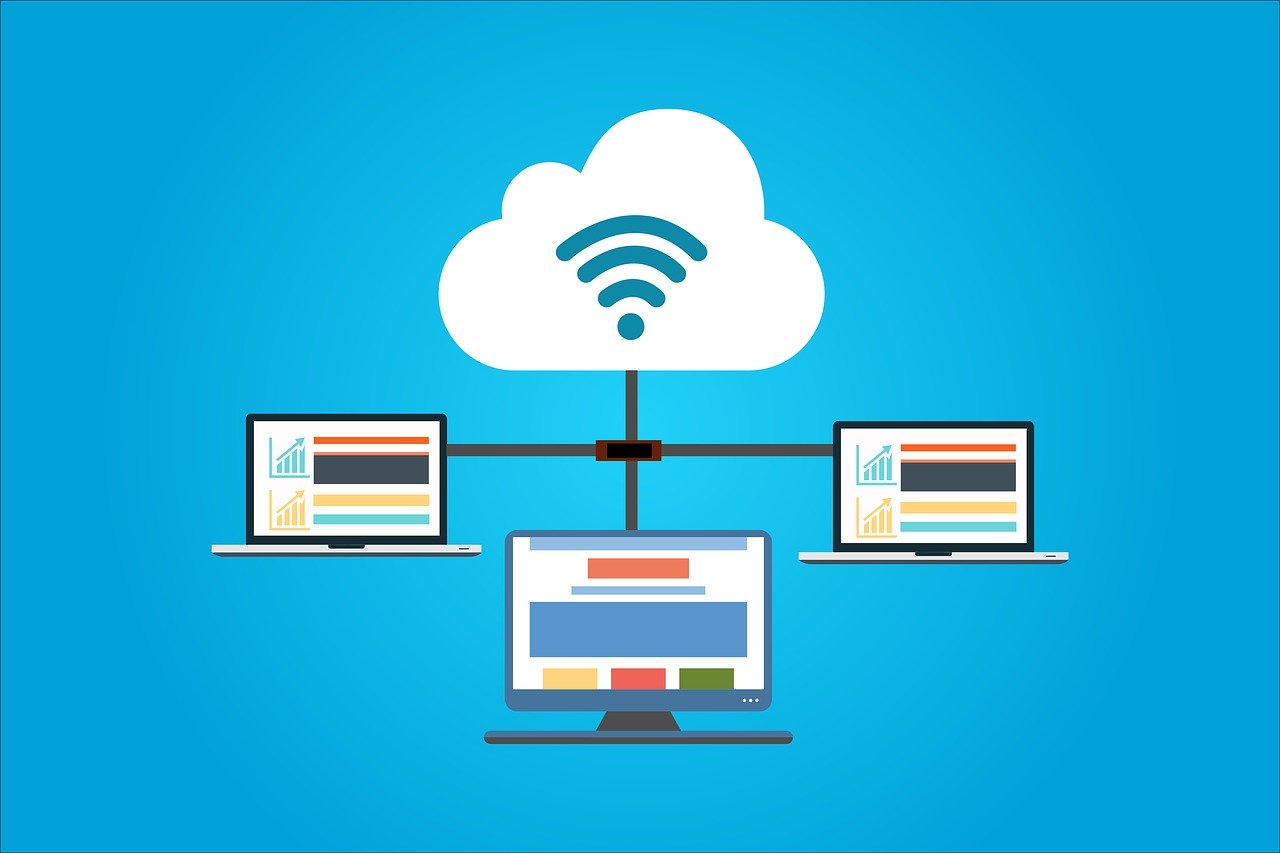Although AWS CodePipeline and AWS CodeBuild are both CI/CD tools, they serve different purposes. CodePipeline refers to a fully managed, continuous delivery service that basically automates the release process for applications. It integrates with other AWS services, such as CodeBuild, CodeDeploy, and CodeCommit, to create a complete CI/CD pipeline. On the other hand, CodeBuild is a fully managed build service that works as a compiler for your source code while also running tests and producing software packages that are 100% ready to deploy. The question in a global debate of codebuild vs codepipeline then arises: why would you use CodeBuild when CodePipeline already has a build stage? Here are four reasons why CodeBuild is better than CodePipeline for building your code.
Build Environments Flexibility
 AWS CodeBuild offers a remarkable level of flexibility when it comes to building environments. With CodeBuild, you have the freedom to choose and customize your build environment based on your specific requirements. This means that you can easily create a tailored environment that meets the needs of your project without being limited by predefined configurations. By allowing developers to define their environments, AWS CodeBuild empowers teams to use any desired combination of operating systems, programming languages, and tools.
AWS CodeBuild offers a remarkable level of flexibility when it comes to building environments. With CodeBuild, you have the freedom to choose and customize your build environment based on your specific requirements. This means that you can easily create a tailored environment that meets the needs of your project without being limited by predefined configurations. By allowing developers to define their environments, AWS CodeBuild empowers teams to use any desired combination of operating systems, programming languages, and tools.
Serverless Build Architecture
With AWS CodeBuild’s serverless build architecture, there is no need for manual infrastructure provisioning. It leverages managed containers in the cloud, which are spun up as needed to execute your build jobs. This means you only pay for the resources used during each build, resulting in cost savings and increased efficiency. Additionally, the serverless approach eliminates issues related to resource contention and scalability constraints. Since each build job runs in its own isolated container environment, there is no interference between different builds or limitations on concurrent executions. This allows for faster and more reliable builds, even when dealing with a high volume of pipelines running simultaneously.
Parallel and Concurrent Builds
Thanks to AWS CodeBuild, multiple build projects can be executed simultaneously, drastically reducing the overall build time. With traditional build systems, developers often have to wait for one single project to finish before starting another, leading to long wait times and decreased productivity. By allowing multiple builds to run concurrently, CodeBuild enables teams to work efficiently on different projects or branches simultaneously. This not only saves time but also allows for better resource utilization, as idle compute resources can be used for other tasks. Developers no longer need to worry about delays caused by one slow build holding up the entire process. In addition, CodeBuild’s parallelization capabilities make it easy to scale up your building capacity based on demand.
Fine-Grained Build Control
 Last but not least, with CodeBuild, developers also have complete control over their build process, allowing them to customize and optimize it according to their specific requirements. This level of control enables developers to fine-tune various aspects such as environment variables, artifacts handling, caching mechanisms, and notification settings. AWS CodeBuild offers a wide range of options for customization, ensuring that developers can tailor …
Last but not least, with CodeBuild, developers also have complete control over their build process, allowing them to customize and optimize it according to their specific requirements. This level of control enables developers to fine-tune various aspects such as environment variables, artifacts handling, caching mechanisms, and notification settings. AWS CodeBuild offers a wide range of options for customization, ensuring that developers can tailor …



 Dwarf Fortress, a fantasy simulator that can do a lot but does a lot more than it should, is Dwarf Fortress. It creates a huge fantasy world full of history, culture, and incredible landscapes. But it’s also the case that being able to choose where to start within that world acts as a granular difficulty setting. You can choose the level of difficulty you want to tackle. It’s more than just being able to create complex machines with it. It’s also that the game rewards you with dynamic goals that fit the fiction of the game.
Dwarf Fortress, a fantasy simulator that can do a lot but does a lot more than it should, is Dwarf Fortress. It creates a huge fantasy world full of history, culture, and incredible landscapes. But it’s also the case that being able to choose where to start within that world acts as a granular difficulty setting. You can choose the level of difficulty you want to tackle. It’s more than just being able to create complex machines with it. It’s also that the game rewards you with dynamic goals that fit the fiction of the game.


 Panda Helper is relatively new for Android users, but it is excellent for them. It has all the qualities you’d expect from this app. You could download third-party games, unofficial apps, and some distinctive features for your phone. This app is starting to be available on the PC also. It allows you to monitor some settings before applying them to your phone. Besides, you don’t need to pay for anything to utilize this app. Therefore, it is beneficial to install this app on your phone.
Panda Helper is relatively new for Android users, but it is excellent for them. It has all the qualities you’d expect from this app. You could download third-party games, unofficial apps, and some distinctive features for your phone. This app is starting to be available on the PC also. It allows you to monitor some settings before applying them to your phone. Besides, you don’t need to pay for anything to utilize this app. Therefore, it is beneficial to install this app on your phone.
 There are certain types of regulations that must be followed to conduct industrial drone operations. If a person does not follow these guidelines, there can be severe legal consequences, especially if they fly the drone to achieve a business goal.
There are certain types of regulations that must be followed to conduct industrial drone operations. If a person does not follow these guidelines, there can be severe legal consequences, especially if they fly the drone to achieve a business goal.  This type of exemption is not only a requirement that must be met, but it also has value to the person who owns it. Like any other certification, it educates the world that your business actions are reputable and credible. It can help increase the number of prospects and ultimately grow your business. Those who want to apply for drone liability insurance will qualify for much cheaper rates if they have a drone certification. The custom of obtaining a 333 waiver from the FAA is extensive. It allows individuals to reevaluate their strategy regarding drone use, what equipment they want to use, and when drone maintenance should or should not be integrated into the overall business program.
This type of exemption is not only a requirement that must be met, but it also has value to the person who owns it. Like any other certification, it educates the world that your business actions are reputable and credible. It can help increase the number of prospects and ultimately grow your business. Those who want to apply for drone liability insurance will qualify for much cheaper rates if they have a drone certification. The custom of obtaining a 333 waiver from the FAA is extensive. It allows individuals to reevaluate their strategy regarding drone use, what equipment they want to use, and when drone maintenance should or should not be integrated into the overall business program. If you have not yet decided whether to incorporate drone technology into your overall business program, this section can help you decide. Industrial drone pilots are a little more likely to record their film, real estate, or movies. Monitoring agriculture and energy infrastructure are also typical applications of drone technology. Many of the tasks are done with a DJI product. These models are reasonably rugged and robust and are famous all over the world.
If you have not yet decided whether to incorporate drone technology into your overall business program, this section can help you decide. Industrial drone pilots are a little more likely to record their film, real estate, or movies. Monitoring agriculture and energy infrastructure are also typical applications of drone technology. Many of the tasks are done with a DJI product. These models are reasonably rugged and robust and are famous all over the world. 


 HDR camera or High dynamic range is the best camera to produce an excellent picture. If you are shooting or taking photos in the studio, you can use a light stand to position the light exactly where you need it and keep it upright at all times. With a few things in mind, you will probably look at the options and choose the perfect shelf or other equipment that suits your needs.
HDR camera or High dynamic range is the best camera to produce an excellent picture. If you are shooting or taking photos in the studio, you can use a light stand to position the light exactly where you need it and keep it upright at all times. With a few things in mind, you will probably look at the options and choose the perfect shelf or other equipment that suits your needs. Always take the opportunity to look around and compare your options before you buy. The only way to find the perfect rack or other equipment for your needs would be to look around and see what is available. This works for coils, shields, and other equipment. When you realize how important an excellent camera rack with various equipment is, it becomes easier to start looking for them. If you want to get the most out of your photos, you need to invest your money and get high-quality accessories and equipment. With these projects in mind, you can look for a new bright shelf in addition to other photographic equipment without having to go through a lot of trouble.…
Always take the opportunity to look around and compare your options before you buy. The only way to find the perfect rack or other equipment for your needs would be to look around and see what is available. This works for coils, shields, and other equipment. When you realize how important an excellent camera rack with various equipment is, it becomes easier to start looking for them. If you want to get the most out of your photos, you need to invest your money and get high-quality accessories and equipment. With these projects in mind, you can look for a new bright shelf in addition to other photographic equipment without having to go through a lot of trouble.…


 Another additional benefit of making utilization of drone photography options is individuals can have higher maneuverability. There are cases when the engine’s vibration, safety equipment, and sound can affect you in shooting photos. Besides that, these items can also block a great view of a city or area. Thankfully, using drones can provide you with the best maneuverability you desire.
Another additional benefit of making utilization of drone photography options is individuals can have higher maneuverability. There are cases when the engine’s vibration, safety equipment, and sound can affect you in shooting photos. Besides that, these items can also block a great view of a city or area. Thankfully, using drones can provide you with the best maneuverability you desire.




 Spotify
Spotify






 The gamers can move freely and easily manage a wireless
The gamers can move freely and easily manage a wireless 
 The device can be connected to your home system and send power. A Wi-Fi camera could connect to a cloud service, where power can be included on any connection, regardless of location. When you’re at work, this gives you a chance to keep your eyes open.
The device can be connected to your home system and send power. A Wi-Fi camera could connect to a cloud service, where power can be included on any connection, regardless of location. When you’re at work, this gives you a chance to keep your eyes open. As a mother, you might want to know if your child is or is not ascending. Sleep training requires your child to be able to fall asleep alone without parental intervention.
As a mother, you might want to know if your child is or is not ascending. Sleep training requires your child to be able to fall asleep alone without parental intervention.




 The gaming system permits people or teams to compete with strangers. Most analysts concur that in the future, an ordinary consumer would be able to get more interactivity and pleasure from their phone. Although the 3D gaming adventure is in a nascent stage, 3D games can now be found in the majority of smartphones.
The gaming system permits people or teams to compete with strangers. Most analysts concur that in the future, an ordinary consumer would be able to get more interactivity and pleasure from their phone. Although the 3D gaming adventure is in a nascent stage, 3D games can now be found in the majority of smartphones.

 Many hosting providers provide the rack space that you can configure on your servers. It is an excellent option if you want to offer your cloud-based services like email or website. It can be cheaper in the long term, although it is expensive to buy servers and manage runtime if you want a high-performance site. It requires that visitors are picked up through the Internet server.
Many hosting providers provide the rack space that you can configure on your servers. It is an excellent option if you want to offer your cloud-based services like email or website. It can be cheaper in the long term, although it is expensive to buy servers and manage runtime if you want a high-performance site. It requires that visitors are picked up through the Internet server.
 The first step in making an excellent website is to consider your target audience. If you are starting a webpage on blogs, think about your niche and view your content blog. If you are a business, who are the people that are most likely to show interest in buying your products. Once you determine an audience, you can begin making creative decisions about making your website to make it attractive to a specific audience.
The first step in making an excellent website is to consider your target audience. If you are starting a webpage on blogs, think about your niche and view your content blog. If you are a business, who are the people that are most likely to show interest in buying your products. Once you determine an audience, you can begin making creative decisions about making your website to make it attractive to a specific audience. Making your site user-friendly is critical because you always want someone to click and visit your website. But if they encounter any slow-loading pages and error messages, they will immediately leave your site. It would help if you made your website easy to be accessed and used for people to stay long enough to check out your content and products.
Making your site user-friendly is critical because you always want someone to click and visit your website. But if they encounter any slow-loading pages and error messages, they will immediately leave your site. It would help if you made your website easy to be accessed and used for people to stay long enough to check out your content and products.





 Mobile phone applications have helped in the search for help, and customers can talk on video chat. Imagine a situation where a person is lying upright and has a stroke, and you can also contact a doctor and use a computer with tablets as medical advice and help the person. The applications helped customers stay connected to network sites, and information could be uploaded to them. This has made it easier for people to get in touch.…
Mobile phone applications have helped in the search for help, and customers can talk on video chat. Imagine a situation where a person is lying upright and has a stroke, and you can also contact a doctor and use a computer with tablets as medical advice and help the person. The applications helped customers stay connected to network sites, and information could be uploaded to them. This has made it easier for people to get in touch.…
 In case you decide to check without taking the vital payment methods with you along with your domain name, you will not be registered while you are hunting to find out which pair of khaki pants you leave in your bag, don’t blame us, but choose the right activities to return.If you think it was a sample, because the registration, leave it, the possibilities are incalculable, let it be.If you think it is an undiscovered domain.
In case you decide to check without taking the vital payment methods with you along with your domain name, you will not be registered while you are hunting to find out which pair of khaki pants you leave in your bag, don’t blame us, but choose the right activities to return.If you think it was a sample, because the registration, leave it, the possibilities are incalculable, let it be.If you think it is an undiscovered domain.
 PVC sheets are popular in building materials, clothes making, and even printing. The reason for its popularity is that PVC is durable, easy to assemble, and cheap and is resilient to almost any kind of environment and relatively stable in harsh conditions, which is why the demand for PVC is high. PVC is also used for damp proofing in building constructions due to its water-resistant properties as well as being stable under UV light in commonly used in building greenhouses. PVC prevents the transfer of heat and is resistant to hot temperatures. These two qualities ensured that PVC is guaranteed to be used as an insulation material.
PVC sheets are popular in building materials, clothes making, and even printing. The reason for its popularity is that PVC is durable, easy to assemble, and cheap and is resilient to almost any kind of environment and relatively stable in harsh conditions, which is why the demand for PVC is high. PVC is also used for damp proofing in building constructions due to its water-resistant properties as well as being stable under UV light in commonly used in building greenhouses. PVC prevents the transfer of heat and is resistant to hot temperatures. These two qualities ensured that PVC is guaranteed to be used as an insulation material.
 One of the reasons why most people find a bit difficult to find a good laptop is that they do know the specifications of the laptop that they want. They go to the market with the mentality that they just need to have a laptop. That is not good if you want a good laptop. You need to be familiar with all the things that a good computer should have. It is also important to put into consideration the use that you are going to put your laptop to. This is important because some laptops are more good in doing some work than others.
One of the reasons why most people find a bit difficult to find a good laptop is that they do know the specifications of the laptop that they want. They go to the market with the mentality that they just need to have a laptop. That is not good if you want a good laptop. You need to be familiar with all the things that a good computer should have. It is also important to put into consideration the use that you are going to put your laptop to. This is important because some laptops are more good in doing some work than others. The brand from which you obtain your laptop from is also very important. Some brands are known to manufacture quality products that are capable of giving you the quality services that you deserve. Others are also known for producing poor quality products whose life span is in doubt. Going for brands that are reputable and popular is a wise thing to do.…
The brand from which you obtain your laptop from is also very important. Some brands are known to manufacture quality products that are capable of giving you the quality services that you deserve. Others are also known for producing poor quality products whose life span is in doubt. Going for brands that are reputable and popular is a wise thing to do.…
 If you suspect that someone else is using your computer, the most basic way to do that is by checking your computer’s history by clicking C+H. However, it’s very easy to delete any computer’s history, and anyone can do that. You also have other options to start monitoring activities on the home computer. These options can also be used if you have kids at home, and you want to keep a tab on the things they are doing on the computer.
If you suspect that someone else is using your computer, the most basic way to do that is by checking your computer’s history by clicking C+H. However, it’s very easy to delete any computer’s history, and anyone can do that. You also have other options to start monitoring activities on the home computer. These options can also be used if you have kids at home, and you want to keep a tab on the things they are doing on the computer. Windows live family safety is another software that you can use to monitor activities. Create an account on this software and log onto it. You can see a list of users that are using your computer. Under the name of the person who you want to keep a tab on, click on the monitor option and then you are ready to go. Whenever you want to monitor any person’s activity, go to the family safety page and click on the view activity report. If you want to block any website from your computer, just click on Select next to the website name, and then Block it for any particular person, or you can also Block the website for everyone who uses the computer. Click on the Save option at the bottom of the page once you are done.…
Windows live family safety is another software that you can use to monitor activities. Create an account on this software and log onto it. You can see a list of users that are using your computer. Under the name of the person who you want to keep a tab on, click on the monitor option and then you are ready to go. Whenever you want to monitor any person’s activity, go to the family safety page and click on the view activity report. If you want to block any website from your computer, just click on Select next to the website name, and then Block it for any particular person, or you can also Block the website for everyone who uses the computer. Click on the Save option at the bottom of the page once you are done.…

 Once the Cydia program is installed, you need to search for the unlock iPhone app called ‘UltraSn0w’. Once you find that app, just download it and then run it. Once you run it, your iPhone 7 will be unlocked. Now you can go ahead and change the SIM. To do this, look for a safety pin or an open paper clip. Shove that into the tiny hole next to the SIM holding tray, and the tray will pop out. This is when you can insert the new SIM of your choice and then reboot the iPhone. Once you turn your phone back on you will see that you have successfully learned how to unlock iPhone 7.…
Once the Cydia program is installed, you need to search for the unlock iPhone app called ‘UltraSn0w’. Once you find that app, just download it and then run it. Once you run it, your iPhone 7 will be unlocked. Now you can go ahead and change the SIM. To do this, look for a safety pin or an open paper clip. Shove that into the tiny hole next to the SIM holding tray, and the tray will pop out. This is when you can insert the new SIM of your choice and then reboot the iPhone. Once you turn your phone back on you will see that you have successfully learned how to unlock iPhone 7.…
 In 2016, Alesis DM6 was replaced by the Alesis Nitro as the best electronic drum for beginners. It’s the bestselling on Amazon because of its incredible value and that you can get it at a low price. The Alesis Nitro electronic drum set looks professional no matter where you are using it, whether on stage or in practice. Also, it possible to hear a recording you just need a cable and a laptop.
In 2016, Alesis DM6 was replaced by the Alesis Nitro as the best electronic drum for beginners. It’s the bestselling on Amazon because of its incredible value and that you can get it at a low price. The Alesis Nitro electronic drum set looks professional no matter where you are using it, whether on stage or in practice. Also, it possible to hear a recording you just need a cable and a laptop. As the name suggest, Alesis DM10 was built with recording in mind. And as the experts have reviewed the product they have come to a realization that it’s best for recording. Because it is well equipped with 1000 sounds. They are overwritten in the computer. So makes the sound library to be limited.…
As the name suggest, Alesis DM10 was built with recording in mind. And as the experts have reviewed the product they have come to a realization that it’s best for recording. Because it is well equipped with 1000 sounds. They are overwritten in the computer. So makes the sound library to be limited.… It is a device which is specifically made provide accessible power supply to laptops, smartphones and other types of mobile phones. It is composed of a hardware frame and a comprehensive set of electrical connection interface. It is essentially a platform where you will be able to install a portable computer. It contains the essential ports which a laptop needs to perform specific tasks. Electrical power is used through a power supply which is built into the docking station.
It is a device which is specifically made provide accessible power supply to laptops, smartphones and other types of mobile phones. It is composed of a hardware frame and a comprehensive set of electrical connection interface. It is essentially a platform where you will be able to install a portable computer. It contains the essential ports which a laptop needs to perform specific tasks. Electrical power is used through a power supply which is built into the docking station. Major online stores have a wide variety of all the best docking stations for laptops available on the market. They have the best selling Microsoft Surface Dock, Plugable USB 3.0 Universal Laptop Docking Station for Windows, Sabrent 3.0 Lay-Flat Docking Station and the Dell USB 3.0 Ultra HD Triple Display Docking Station. These four products have received the best reviews for their high-performance results and exceptionally made hardware. Users who have had the chance to try them have been very pleased with how efficiently they were able to charge their laptops.…
Major online stores have a wide variety of all the best docking stations for laptops available on the market. They have the best selling Microsoft Surface Dock, Plugable USB 3.0 Universal Laptop Docking Station for Windows, Sabrent 3.0 Lay-Flat Docking Station and the Dell USB 3.0 Ultra HD Triple Display Docking Station. These four products have received the best reviews for their high-performance results and exceptionally made hardware. Users who have had the chance to try them have been very pleased with how efficiently they were able to charge their laptops.…